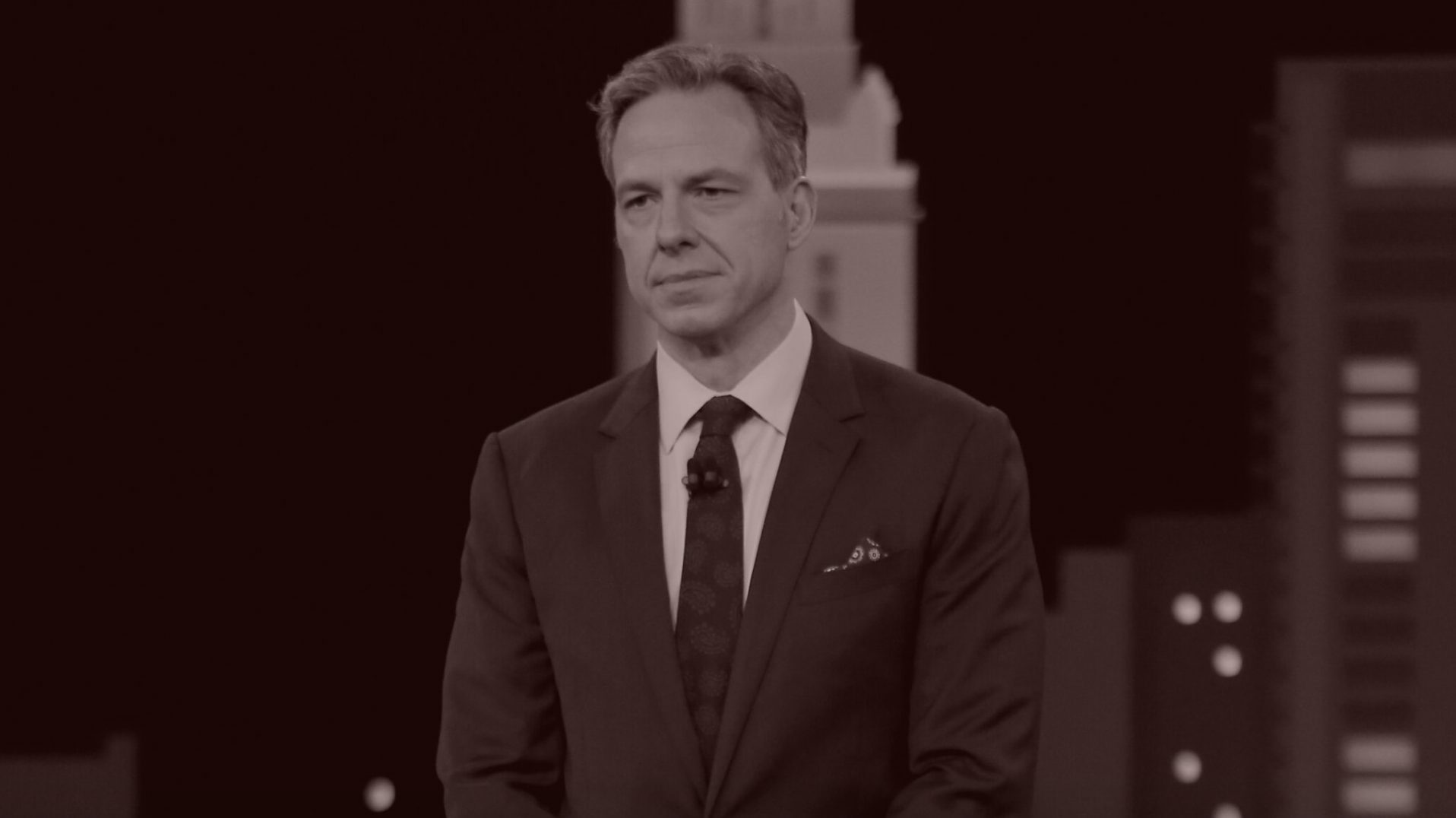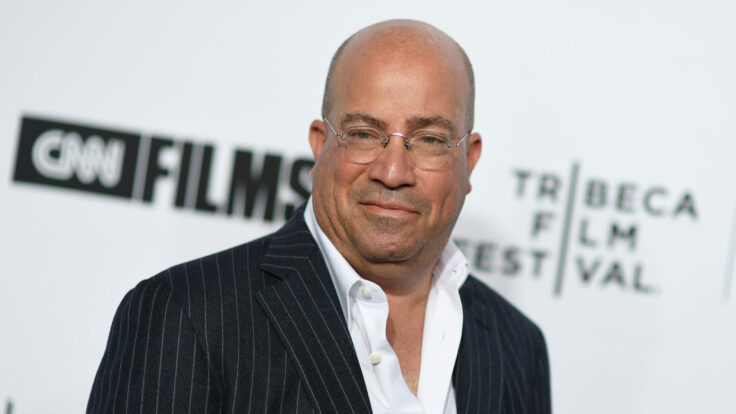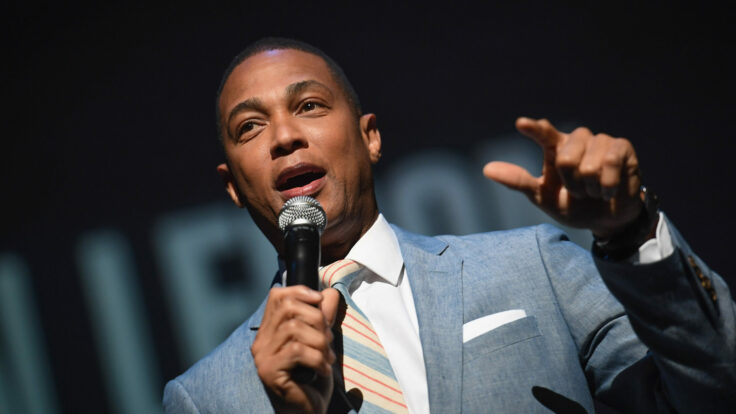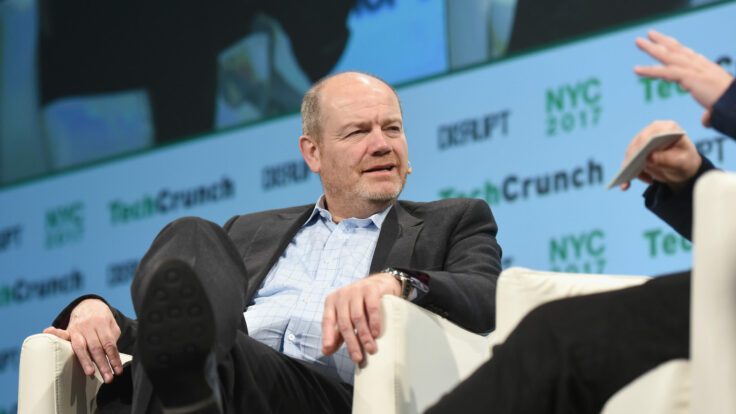 |
|
Welcome back to In The Room, my biweekly private email on the inner-workings of the media industry. For today’s column, I exchanged notes with my editor, and Puck co-founder, Jon Kelly—about the consolidation of Murdoch’s empire, the late-night-ification of CNN, Semafor, and more.
But first, just as I went to hit send, it came to my attention that CNN is bracing for more layoffs, partly as a result of the recent consolidation of its television and digital newsgathering units—though the cuts are likely to go well beyond that. The full extent of the layoffs is not yet known. In May, CNN C.E.O. Chris Licht told staff he did not plan on making large staff cuts. Since then, he has laid off a few notable on-air talents, several members of the CNN audio unit, and about 20 former CNN+ staff who had remained at the network. There are now more to come.
“For months, we have made clear that we are doing a thorough review of the business to best align priorities with resources,” CNN communications chief Kris Coratti said in a text message. “It is ongoing and no new decisions have been made.”
|
 |
| Tapper Troubles & Semafornication |
| News and notes on the industry’s inside conversation: a check-in on the Tapper experiment, Murdoch curiosities, and Semafor’s launch. |
|
|
|
| It has been, as is almost always the case, a busy week on the media beat: Rupert Murdoch has moved to consolidate Fox and News Corp, and to elevate his favored son Lachlan to the top of his media empire; the Smiths have finally, finally, launched their highly anticipated new media venture; and, in the ever self-obsessed world of TV news, eagle-eyed media executives and CNN insiders are growing more and more fearful about the viability of Chris Licht’s new Tapper-centric prime time strategy.
Herewith, I discuss it all with Puck’s co-founder and my editor and business partner, Jon Kelly.
|
|
|
| Jon: Dylan, I know its early days in the Jake Tapper prime time experiment, but I’m curious if you’re seeing any leading indicators of how things might go?
Dylan: The early numbers are dismal. Tapper is averaging below 700,000 total viewers and has, on multiple occasions, come perilously close to just 100,000 viewers in the demo. Last night, he had just 523,000 total viewers, his lowest ratings yet. These are numbers that one notable television executive described to me as “absolutely brutal.” If CNN executives still believe he can compete with Alex Wagner at MSNBC, they’ve got their work cut out for them, because he’s currently drawing about half her overall audience and, as often as not, losing to her in the demo.
And yes, it is early; and yes, every new venture should be afforded some runway, some time to tinker and tweak and change tack. But these early numbers indicate that the path to success is far steeper than initially thought.
So, why isn’t this working so far? The overwhelming assessment I hear from cable executives, producers and CNN insiders is that Tapper lacks the showman’s spark, which has historically been required for prime time success. Maddow, O’Reilly, Larry King—all very different characters, to be sure, but they were entertainers, each uniquely captivating in their own way. Tapper was very good in the afternoons as the Serious Newsman™ pursuing truth and accountability, but that’s not how he’s being programmed in prime time. As I wrote last week, he’s being asked to do these chummy, pseudo-Maddow-style monologues with overly simplified framings on the news, premeditated hand gestures and ill-advised dad jokes. (On Thursday night, he prefaced this routine with a terribly awkward handoff with Anderson Cooper that I know raised a few eyebrows at the network.)
As one veteran insider put it to me, “Maddow was bursting with life and ideas and energy and stories. O’Reilly was bursting with bile and anger and an instinct for mud wrestling and the jugular. Larry King was bursting with schmaltz and showbiz and Sammy Glick and an insider’s love of gossip. … [Tapper] isn’t a primetime star in any sense. He’s not a natural performer. And he has no innate instincts as an entertainer or showman. It’s all an intellectual calculation. You can see the gears grinding. ‘Turn. Look at other camera. Deliver clever line.’”
It may be that Chris Licht, a veteran of morning shows and late night, thinks this mashup of Maddow and Colbert is what’s required to make nonpartisan programming work in prime time. But it certainly isn’t playing to Tapper’s strengths. It is also very out of sync with Licht’s stated interest of restoring CNN’s reputation as a straightforward, facts-first news brand. He may have helped tone down some of the network’s high-horsed chest-thumping (of which Tapper, of course, was an avatar), but bad puns and tacky jokes can be equally off-putting for the American electorate.
But while we’re on CNN, I’d like to put something in perspective. We’re talking about the battle for a few extra hundred thousand viewers, to claim victory in an industry that is in inexorable decline—relative victory, actually, because Fox News’s ratings are in another stratosphere. CNN’s fate isn’t going to be determined by whether Tapper beats Wagner, or vice versa, but rather by what the business does to position the brand for a post-linear, multi-platform world where CNN is competing not just with MSNBC but with The New York Times and Netflix and every other media-tech-lifestyle brand vying for thumbs and eyeballs. Say what you will about CNN+, but it was at least something.
What worries me about Licht isn’t the programming decisions—Tapper here, Don Lemon there, etc.—it’s that he still seems to believe programming is the solution, or where the battle for the future is being fought. Licht isn’t CNN’s president, which was the title that Jeff Zucker wore. He’s its C.E.O. and chairman. And the C.E.O. and chairman of a consequential modern media business shouldn’t be rearranging deck chairs on the Titanic; he should be building life rafts and speedboats to power their company into the future. Early on, Licht signaled that he was going to spend the summer tinkering. But it’s October now, and many in the industry are looking for signature decisions.
|
|
|
| Jon: You reported this week on some of the palace intrigue around Rupert Murdoch’s desire to combine his remnant media assets, Fox Corp. and News Corp. The cynical view of this kind of strategic combination is that it makes the combined entity easier to sell. But do you think Lachlan wants to sell? The guy has worked his entire life to be in charge, the chosen son, etc. Why give it all up now?
Dylan: Well, I don’t think his father will let him sell. So regardless of what Lachlan wants, I don’t foresee anything happening on that front so long as Rupert is alive—and Rupert’s mother lived to 103. Moreover, I suspect Lachlan enjoys the power and influence that comes from being in charge of his father’s kingdom, or at least what’s left of it. Fox and News Corp. have extraordinary political and cultural influence in the United States, the U.K. and Australia. Having grown up in direct proximity to that power, Lachlan has probably enjoyed trying it out, himself. That may explain, in part, why he’s become more outspoken about his own political views in recent years.
As I noted earlier this week, Lachlan doesn’t want to run operations day to day. Paddy Manning, his biographer, told me he “has always aspired to be chairman, not C.E.O.” But he can pass those duties to a trusted deputy—perhaps Viet Dinh, the Fox lawyer, family friend and valued member of the Murdoch brain trust—and leave ample room in his schedule for all the perks afforded to a still-young media chairman with vast wealth.
Now, one thing to keep in mind is that Lachlan’s control is only guaranteed so long as Rupert is alive. The family’s shares in Fox and News Corp. are kept in a trust that the elder Murdoch and his four oldest children—Lachlan, James, Elisabeth and Prudence—vote on. When Rupert passes, his shares will be split among the four children, so it’s conceivable that Lachlan’s siblings could use that opportunity to exert some influence over their inheritance, and maybe even oust him. But there’s no telling when that will happen, where the company will be by then, nor what the familial dynamics will look like at that point. But it’s something to keep in mind. I’m sure it will factor into a future season of Succession.
|
|
|
| Jon: Semafor launched Tuesday morning. We openly root for those guys, but I’d love to hear your unbiased top line impressions and observations.
Dylan: Ben Smith and Justin Smith set a very high bar for this new venture from its inception when they started marketing it as an ambitious global media company, one that may one day rival the Times and Bloomberg. It was likely a representation of the excitement they felt as they dug into the venture, but they are still, in some ways, being judged against that ambition. And so, as with Katzenberg’s Quibi, their hubris inadvertently created some skeptics who delight in the fact that this week-old company isn’t quite yet the Times.
Once again, it’s early. The Smiths, like Tapper at CNN, should be given some runway in the court of public opinion. So far, some people like it, some people are undecided, as is inevitable. But there are a lot of observations I have, including some shared with me or echoed by the media executives that I talk to on a regular basis, that I hope will provide the Smiths with some useful, constructive feedback.
First, their “semaform” format. This essentially deconstructs newspaper column writing into bulleted paragraphs, and tries to separate the news from the reporters’ perspective and additional perspectives. This doesn’t yet seem like a format innovation so much as an alternative template, and even Semafor has a hard time abiding by it because the news doesn’t always fit so neatly into these boxes. For instance, there are articles that swap out the “Reporter’s View” for a “Know More” section, akin to Axios’s “Go Deeper.” The key difference between Semafor and Axios, though, is that Axios fulfills its promise of saving its readers time; Semafor hasn’t been able to do that yet. (Also, I would have preferred to read Ben’s column about the Times in a regular format.) Axios built a $500-million business on a very clear and succinct thesis: we’re going to save you time and make you smarter. Semafor is working on articulating its own.
Second, the design is still a work in progress on desktop. Presumably the Smiths ascribe to the Zuckerbergian notion that mobile is all-important, but there are some tweaks, like a jumble of black text that appears on their homepage’s top right corner, that will likely be addressed by the dev team soon. Semafor has a printy quality, which is nice, but it could be more elegant. I actually don’t mind the yellowish-tan color motif, though more than one critic has noted, quite aptly, that it is reminiscent of the color a newspaper gets after sitting out in the sun.
Finally, after all those audacious and ambitious claims about creating a better, smarter global news product to service 200 million under-satisfied news consumers, they launched with some solid newsletters, a text message from Ron Klain, an interview with James Bennet (which, as a media reporter, I very much enjoyed!) and a lot of articles that, but for being written in “semaform,” felt more or less like something I’d read in the Post or the FT. Wouldn’t this have been the moment to flex Justin’s rolodex and get an exclusive with Putin or Xi Jinping or even Macron? Or a signature scoop that shakes the news cycle in D.C. or Lagos or London?
Next month, in his capacity as a Times reporter, Andrew Ross Sorkin is going to interview Zelensky, Netanyahu, Mike Pence, Janet Yellen, Larry Fink, Andy Jassy, Mark Zuckerberg, Shou Chew, Reed Hastings and Sam Bankman-Fried on stage in New York, all in the course of a single day. Tapper had a Biden exclusive when he launched his prime time show. Ben’s a scoop obsessive, so this surprised me a little, but I recognize that they’re not just starting a publication, they are building a business. It’s a long game, and Ben on his former employer offers news value.
Jon: I was listening to Ben this morning on Pivot, Scott Galloway and Kara Swisher’s terrific podcast, and he sounded genuinely relieved, anxious, proud, excited, feeling all the entrepreneurial feels, as to be expected. It’s been a heady week for them. I’m a Semafor subscriber, and obviously I’m as interested in the business model as I am the work that they are publishing. We emerging media companies are all learning from one another in real time.
In particular, I’m fascinated by a couple big bets that they are making out of the gate. First, like you, I’m interested to see whether the “semaform” sticks. Second, I’m really fascinated by their investment in video. A lot of people in the industry gave up on the medium when it didn’t prove extraordinary returns during the last decade, and lurched a lot of publishers into the wrong direction. Of course, it’s a complex investment area: digital video is the present and future of the internet; but, alas, many do it well, and it ain’t always cheap. I think news publishers may have given up before really innovating to see what’s there. Semafor is going to teach us all a lot, and I’m excited about that.
Thirdly, and perhaps least interestingly, I’m fascinated by their financing. Semafor is said to have raised $25 million via a SAFE financing, a vehicle that (to be quite reductive, in a CliffsNotes way) converts cash into future equity. This suggests that they have the enduring faith from their investors in numerous ways, and probably some optionality about their valuation. If they succeed, I expect you might see other large SAFE financings in media. Which will be very interesting in an era when many creators are going off on their own, via Substack or other platforms, and more iteratively exploring their futures.
Also, regarding your point about the design, when I awoke on Tuesday to check our Semafor, I immediately recognized the parents in the baby. Justin, after all, is a sharp-dressed guy with lots of elan; Ben is a one-of-a-kind news and adrenaline junkie. Semafor is right in the middle.
And just as a last thought here: Ben and Justin have caught a ton of shit about this business, often unfairly. Entrepreneurship is hard. I really wish them all the best.
Dylan: As do I. Truly.
|
|
|
|
| FOUR STORIES WE’RE TALKING ABOUT |
 |
| Netflix Claps Back |
| The recent earnings call was an F-U to critics, but some arguments were more persuasive than others. |
| MATTHEW BELLONI |
|
 |
| Licht’s Lash |
| Peter and Dylan dissect light’s latest programming choices and non-choices. |
| PETER HAMBY & DYLAN BYERS |
|
 |
| Post-Squad Goals |
| What is the squad’s message in a post-Trump, pre-possible-mini-red-wave world? |
| TARA PALMERI |
|
 |
| Of Mice and Memes |
| What did the finance industry glean from the GameStop frenzy? |
| WILLIAM D. COHAN |
|
|
|

|
|
|
| You received this message because you signed up to receive emails from Puck
Was this email forwarded to you?
Sign up for Puck here
Interested in exploring our newsletter offerings?
Manage your preferences
Puck is published by Heat Media LLC
227 W 17th St
New York, NY 10011
For support, just reply to this e-mail
For brand partnerships, email ads@puck.news
|
|
|













